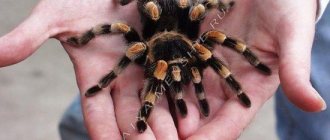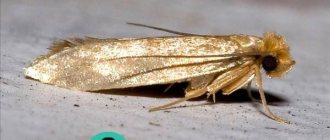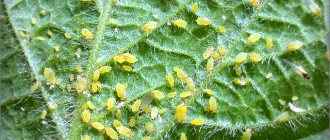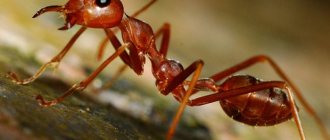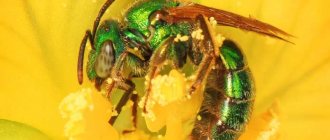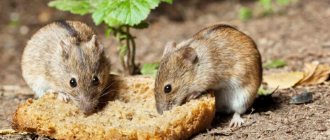Quote from Sergey_Best
Read in full In your quotation book or community!
The most beautiful moths on the planet!
Moths and butterflies belong to the same order - Lepidoptera. These insects got their name due to the scales on their wings. 89-94 percent of all known Lepidoptera are moths, and only 6-11 percent are butterflies.
According to the Library of Congress, “One of the easiest ways to tell a butterfly from a moth is to look at the antennae. Butterflies' antennae have thickenings at one end of a long stem. Moths have hairy or serrated antennae.” We invite you to learn about the most unusual and beautiful moths and butterflies, the existence of which you probably had no idea at all.
Population and species status
Photo: Cabbage butterfly
These lepidopterans have a large distribution area and are quite aggressive pests of cruciferous crops. If you do not fight them, cabbage weeds can lead to 100% loss of yield of different types of cabbage; they can eat radishes, turnips, rutabaga, and rapeseed. The fact that adults tend to migrate poses a threat to areas where they were previously scarce or not found before.
Damage from whiteweed can lead to a significant reduction in crop value. Externally, the cabbage heads will look quite decent, but inside they are often damaged by larvae. Caterpillars often hide inside cauliflower, which reduces its value. High localization of larvae leads to the fact that one clutch eats the plant down to the skeleton and moves on to another.
This pest is subjected to chemical methods of destruction. In small areas, caterpillars and insect eggs are collected by hand. Although the population is constantly monitored and regulated by humans, the insect is considered a pest in many European countries, China, Turkey, India, Nepal and Russia, where there is significant annual yield loss on various vegetables.
In 2010, the butterfly was first discovered in New Zealand. Within three years, it had multiplied and was now considered a serious and unwanted invasive pest.
To combat cabbage whites, in addition to chemical and mechanical methods, biomethods were also used. Special predatory wasps were released into the fields. This pest control campaign has been successfully completed. This success was due to the fact that the alarm was raised immediately and measures to combat cabbage were taken in the early stages. But in Australia and the USA, these lepidopterans continue to reproduce and spread.
The cabbage butterfly can quickly take over your area. To prevent the proliferation of cabbage weeds, you need to fight cruciferous weeds, sweep or whitewash tree trunks and fences in autumn and spring to remove pupae. During the season, it is necessary to carefully inspect the plants and collect caterpillars and egg-laying eggs. It is undesirable to use chemical control methods that can kill beneficial insects. The use of folk remedies is more justified: infusions of wormwood, tobacco, chamomile, etc.
Tags:
- Amphiesmenoptera
- Obtectomera
- Panarthropoda
- Pierina
- Pierinae
- Pierini
- Butterflies
- Butterflies of Moscow
- Butterflies of Russia
- Belyanki
- Clubwhiskers
- Double-pore
- Bilaterally symmetrical
- Animals of Belarus
- Animals of the mountains
- Animals of Eurasia
- Animals of India
- Animals of Kazakhstan
- Animals of China
- Animals starting with the letter B
- Animals starting with the letter K
- Animals of New Zealand
- Animals of the fields
- Animals of Russia
- Animals of Turkey
- Animals of Ukraine
- Winged insects
- Shedding
- Insects with complete metamorphosis
- New-winged insects
- Garden whites
- Protostomes
- Varied winged butterflies
- Tracheal breathing
- Proboscis
- Lepidoptera
- Arthropods
- Hexapods
- Eukaryotes
- Eumetazoans
1) Poodle Moth
The Venezuelan poodle moth, which was discovered by chance in 2009, has not yet been classified as a new species because scientists are not yet sure how to classify it. Since no one has described such a butterfly before, scientists are trying to trace the evolutionary stages of this insect.
These moths are highly hairy; their legs and wings are covered with tiny hairs, which makes them look like woolly animals, such as poodle dogs, hence the name.
Description and appearance
What do ladybugs eat at home?
The hawk moth butterfly is usually large or medium in size. Its body with a long proboscis of the Lepidoptera order has a cone shape at the end and is pointed, its wings are elongated and reach a span of 30 to 175 mm. The apices of the long antennae are pointed and hook-shaped. The eyes are round in shape and covered with a tuft of long scales. The proboscis is significantly longer than the body - it can be several times larger in size, but in some species it is short.
Hawkmoth hovering over a flower
The labial palps are curved upward. They are covered with scales on the outside, but there is no such covering on the inside. On the paws you can see short spines arranged in several rows. The abdomen has scales that gather at the end in the shape of a brush or tassel. The length of the hind wings is one and a half times greater than their width, and even in the photo a significant bevel towards the rear edge is visible to the naked eye.
Hawkmoth eggs are oval and measure approximately 1.5 by 1.2 mm. The color is usually pastel: it can be pale green or blue. The eggs are left on food plants, and the butterflies choose the underside of the leaves.
The hawkmoth caterpillar is distinguished by its large size, five pairs of legs and bright coloring - it is decorated with oblique stripes and spots resembling eyes, and individual hairs can be seen on the surface. Its length is initially up to 12 mm, while caterpillars of the fourth instar can grow significantly and be from 40 to 55 mm. Their weight is approximately 4 g.
Hawkmoths are real gourmets - they usually feed on either just one type of plant, or several, but closely related ones. You can see caterpillars both on trees and shrubs, most often in the dark - they are active in the evening and at night. However, some species are awake during the day.
The hawk moth pupa is distinguished by a characteristic elevation at the rear end, which is shaped like a horn. It is smooth and shiny. Weight varies from 7 to 12 g, color in the first hours after pupation ranges from yellow to cream, sometimes with a green tint, and later turns red. The pupal stage lasts about 30 days.
In the caterpillar stage
What does the hawk moth eat? Some species are pests that can cause harm to broad-leaved and coniferous trees in forests, and to stone fruit and fruit crops in gardens. But don't worry. The hawk moth caterpillar, although not beneficial, will not cause serious damage to the crop, and it is not worth fighting it.
Business ideas with butterflies
You can breed butterflies not only for entertainment, but also for business. There are several promising options for making money from these insects. The initial investment pays off in 2 weeks, and organizing an insectarium at home is easy even for a beginner.
Depending on your wishes, you can choose one direction of work or combine several:
- sell pupae and butterflies to other breeders;
- sell dried exotic specimens as souvenirs;
- organize exhibitions;
- rent out for photo shoots or weddings.
Butterflies feed on fruit nectar and do not require other food.
Sale of pupae for breeding
The first option for making money is selling pupae for breeding. Nowadays these insects are most often sold online. The breeder creates a website where he talks about his butterflies and offers to buy them. The average cost of a doll is 200 rubles, the standard batch size is 15 dolls. Having sold one batch, the owner of the insectarium will earn 3 thousand rubles.
You can also buy caterpillars for breeding butterflies online. The investment will pay off in the first weeks of operation. Consider the issue of delivering pupae by mail or courier service: packaging, speed, ventilation, insect safety.
Sale of live butterflies
A similar line of work is the sale of live butterflies. Considering the transience of the life cycle of these insects, for successful implementation you need to think carefully about marketing. How will buyers receive butterflies?
These insects are bought not only for home keeping, but also for events. For example, butterfly fireworks are popular. This is the name given to a box with several insects inside, which are ceremonially released at weddings and similar events. The cost of one fireworks is at least 2 thousand rubles. Reviews on the Internet about such services indicate their popularity.
Dried butterflies in a frame
Anyone can learn how to decorate frames with butterflies. Only accuracy and attentiveness are of fundamental importance. Phenol is commonly used to preserve insects. Among the necessary equipment, we note a glass desiccator (pan), a pin and planks for spreading the wings.
Butterfly exhibitions
The owner of an impressive collection of butterflies can make money by organizing an exhibition. These often take place in shopping centers and are popular with families with children. The exhibition requires several dozen insects of different species, preferably exotic, and an area of 20-30 sq.m.
Ticket price: 150–200 rubles. Shopping centers have very high traffic, so it is quite possible to attract up to 200 visitors in one day. The exhibition can be combined with the sale of dolls and live butterflies, souvenirs, fireworks and paid photography.
A framed butterfly is a popular souvenir that costs at least 450 rubles
Photo sessions with butterflies
The popularity of personal photo sessions has not decreased for several years. But there is a crisis of originality: photographers do not know what new to offer the audience. This is an opportunity for a butterfly breeder to make money: rare insects can be rented out. The approximate price for renting copies for photography per hour is 500-700 rubles. This way you can freely earn several thousand a week. The line of work is easily combined with the sale of butterflies and fireworks, souvenirs and exhibitions.
The owner of the insectarium must only think about the delivery of insects to the photo shoot location. It’s easy to find clients through social networks - all photographers have work accounts there.
How to fight a moth
Development and structure of butterflies
Pest control becomes more complicated due to the possibility of migration of the meadow moth. In agricultural areas, regular monitoring of the number and appearance of butterflies and caterpillars is carried out. Measures to combat the meadow moth are taken even before the mass spread of insects.
Treatment with chemicals is advisable when 5-20 caterpillars are detected per square meter
The following activities are carried out:
- To destroy wintering caterpillars, deep digging of the soil is carried out in early spring.
- Timely removal of weeds, which the meadow moth uses as intermediate food.
- Regular hilling of plants, digging up rows, as well as loosening the soil.
- On personal plots, manual collection of caterpillars is possible.
During the laying period, trichograms are released at intervals of 5-7 days. Of the biological products, “Lepidocid” and “Bitoxibacillin” have proven themselves well.
Chemical agents against meadow moths have the greatest effect on caterpillars of the first instars. Adults become resistant to insecticides. Spraying of drugs over large areas is carried out by air or ground transport. They use Decis, Fufanon, Phosfamide, Karbofos.
beetlestop.ru
What happens to the affected culture?
Small breeds of monkeys for home. pet monkeys: varieties, care at home. caring for an exotic pet at home
The leaf and branch on which the white night moth has laid eggs, after the appearance of the caterpillars, are slowly covered with viscous translucent threads, similar in appearance to a cobweb. Over time, entire colonies colonize the garden crop on the site, causing cocoons of cobwebs to form on the plant.
When severely damaged, trees do not overwinter well and often freeze out, causing them to lose their ability to bear fruit or die altogether. Everything is aggravated by the fact that after two months of parasitism on the plant, the caterpillars pupate again and in early August the white moth, the photo from which you see in the article, goes in a second wave to garden crops that have already been damaged and not yet affected by the pest. If no measures are taken, this process will be virtually endless and will serve to spread the American moth to many hectares around.
Mineral salt diet for offspring
It is worth noting that salt and minerals are especially important for males during the mating period. Without these elements, the mating season may not produce offspring. However, butterflies are able to replenish their reserves without feces or human sweat. In their absence, they obtain salt and minerals from dirt, the most common, for example, from puddles.
Organic Gardening - Product Database
Food sources for nest boxes and habitats
Imagine a more complete garden!
Isn't this a great idea? But if you don't want to plant certain flowers for this purpose, which also requires more or less care, we have found the perfect alternative. Why only feed birds in winter using a birdhouse when you can do the same for butterflies in summer? At butterfly feeding grounds, you can watch these magical creatures and enjoy their grace. These nutrients are transferred from male to female during the process of copulation. They make the eggs laid stronger and transmit the necessary genetic information. And this is very important. That is why in warm weather, when puddles dry up, many male butterflies of various species accumulate around the puddles and replenish their reserves of salt and minerals.
Build your own butterfly feeding area
A butterfly feeding station also ensures that more butterfly species visit your garden. You'll be amazed at how many different species there are in your area that you didn't know about. If you now feel like equipping your garden with such a feeding station, you can either buy a ready-made one or make it yourself. In this article, we have a simple guide through which you can make the perfect feed from a few items that you have mostly even in your house.
What do house butterflies eat?
In captivity, it is better to feed the butterfly once a day. An aqueous solution with honey or sugar (in a ratio of 2:1) is very suitable for them. You can also include rotten fruits in your diet; the choice is varied, the main thing is that the fruits are juicy. A butterfly's taste buds are located on its front legs, so in order for it to start feeding, it must be carefully moved to a food source. Some butterflies have poorly developed receptors, so sometimes it is necessary to expand their proboscis to help them taste food.
Once the protein stored by the caterpillar runs out, the butterfly loses its ability to reproduce. Therefore, she is forced to use her proboscis to absorb liquid food.
All butterflies are characterized by the presence of a long, movable proboscis. It is formed by highly modified and elongated lower jaws and is adapted for sucking nectar from flowers. With its help, butterflies extract nectar from flowers or suck out the juice flowing from damaged trees and fruits. Day and night butterflies feed on liquid food, which they absorb using a tubular proboscis. When the butterfly is not feeding, it keeps its proboscis coiled under its head. It unfolds when the insect sucks food or water.
The length of the proboscis usually corresponds to the depth of the flower, the nectar of which the butterfly feeds on. The proboscis of different species of butterflies differ in shape and length. In some tropical hawk moths (Sphingidae), their length exceeds 25 cm. Flower nectar is the main source of nutrients for both day and night butterflies. Nectar-feeding butterflies, flying from flower to flower, help pollinate plants. Pollen from one flower sticks to their bodies and legs and is transferred to another. Food plants (the plant where the butterfly collects nectar or sap) are not the same for different species.
Some species typically feed on fruit juice or plant sap. A number of species, including the Great Moth and Egeria, are often found growing on honeydew, the sweet secretion of aphids.
Butterflies are not as picky about food as caterpillars. However, although the main dish of most of them is nectar, each species has its own gastronomic preferences. Even the manner of nectar absorption among butterflies of different families differs markedly. Large swallowtails drink nectar, barely touching the petals with their feet and fluttering their wings. Therefore, they choose flowers that have enough space above them for their large wings. Hawkmoths never descend or even touch the corolla, hovering in the air like a hummingbird. Other butterflies usually enjoy nectar while sitting on a flower with their wings folded or open. Many butterflies do not refuse a menu that is unattractive from a human point of view: rotting fruits and vegetables, leaking sap from damaged trees, excrement of mammals and birds, and even decomposition products of animal corpses.
Some species of butterflies do not feed as adults (for example, certain species of cocoon moths, moths and other silkworms); the proboscis of such butterflies is poorly developed or absent.
A cluster of sailfish on wet clay, from which they receive trace elements along with moisture.
Most species, being anthophiles, feed on flower nectar. Many Lepidoptera also feed on tree sap and rotting and overripe fruit. The death's head hawk moth willingly eats honey from the nests and hives of bees. Primary toothed moths feed on pollen.
Species with reduced mouthparts do not feed and live solely on the reserves of nutrients accumulated in the caterpillar stage.
A number of species from the families of nymphalids, swallowtails and others require microelements, primarily sodium, for their life.
They willingly fly onto wet mineral clay, excrement and urine of large animals, wet charcoal, human sweat - from where they receive moisture and essential microelements. Often males of these species gather in groups on wet sand and clay soils, along the banks of streams, near puddles.
As an exception, predators are also present among butterflies - cutworms of the genus Calyptra - for example, Calyptra eustrigata, which lives in the territory from India to Malaysia; and Calyptra thalictri, Calyptra lata. Males feed on the tear fluid and blood of large animals, piercing their integument with a sharp proboscis. Females feed on the juice of fruits and plants.
Scoops
These butterflies got their name due to their nocturnal lifestyle and the corresponding coloration of some types. This group includes 35,000 species living on various continents. On average, cutworms are small insects with a wingspan of up to 35 mm. But among them there is a true giant, whose wings spread to a width of 31 centimeters. This is tizania agrippina. When flying at night, it can be mistaken for a medium-sized bird.
How do butterflies become pests of the national economy?
The most destructive period for plants is the end of spring - the beginning of summer. It is at this time that the caterpillars, before pupating, gain strength by eating everything that comes their way. After several weeks, the butterflies hatch from their pupae. These insects do not live long and die en masse, but this does not make them smaller, since they manage to lay eggs.
Feeding point for butterflies from mason jar
What you need for the butterflies:. - a small heater with a lid - scissors - a sponge or cotton cloth - sugar - water - perhaps felt or balsam wood in a teardrop shape. You need a piece of string. The length should be at least three times the length of the mason jar. Use this string to create macramé that you can use to hang a mason jar to immerse the butterflies later.
A beautiful macrame pattern is created in principle thanks to the knots that are connected. For this reason, this is also the next step for the butterfly feed station. Start with a knot around the mason's neck. This should be bound so that the end of the string remains the same length.
Thus, beautiful butterflies are serious pests, and the nutrition of their offspring is connected with this.
7) King Walnut Moth
Royal walnut moth (lat. Citheronia regalis), also known as royal citheronia. These insects are common in southern North America and have also been seen in the New York area. They do not boast the largest wingspan (only 10 centimeters), but by weight they are considered the largest moths in northern Mexico.
Natural enemies of the swallowtail butterfly
Photo: Swallowtail Butterfly
At all stages of the insect's life cycle there is danger. The Swallowtail butterfly can become food for arachnids, birds, ants, insectivores, and small mammals. Moths are most vulnerable in the caterpillar or pupa stage. The insect manages to avoid attacks thanks to its camouflage color.
When young, the caterpillar looks like bird droppings. After the next molt, black and bright orange spots appear on the body. The colorful appearance lets predators know that the insects are not suitable for consumption. If the caterpillar senses danger, it begins to emit an unpleasant putrid smell with its horns, indicating that its taste is disgusting.
On the hind wings there are red-blue spots with a black border, resembling eyes in appearance. When the wings are spread, these spectacled spots discourage predators who want to feast on the moth. The effect is secured by elongated processes at the tips of the wings, reminiscent of tails.
Seventy years ago, moths were considered pests due to their consumption of human-grown plants. People destroyed butterflies in every possible way, treating fields with poisons and chemicals. Because of this, the number of the species quickly decreased and meeting this fluttering creature became a problematic task.
4) Saturnia cecropia
Saturnia cecropia (lat. Hyalophora cecropia) mainly feeds on maple leaves when it is still a caterpillar. With a wingspan of up to 12 centimeters, this moth is the largest in North America. Like many other moths, cecropia is nocturnal and is very rarely seen during the daytime.
What do butterflies eat?
One of the most interesting questions is what do butterflies eat? It is worth noting that the insect begins to look for food only when the protein accumulated by the caterpillar begins to decrease, and it needs energy in order to lay eggs.
In general, it is not entirely correct to say that butterflies travel, because they can only drink. They drink nectar from flowers with a proboscis specially adapted for this purpose, which they fold under their heads. When expanded, it can reach up to twenty centimeters, and sometimes more. It depends on how deep the flower calyx is.
First, insects feel with their paws the plant from which they are going to drink, thereby checking whether it is edible or not. Only then do they straighten their proboscis and begin to drink nectar.
In addition to nectar, the butterfly can feed on the juice of fruits or berries. Insect larvae can eat:
- leaves,
- flowers,
- seeds and even fruits of plants.
They do this thanks to the presence of their oral apparatus. This is what butterflies eat.
What do butterflies eat at home?
As strange as it may sound, you can keep lepidoptera at home. It is very interesting to watch such insects at home. And, I must say, it’s not at all difficult. A butterfly can be bred at home from a pupa or caterpillar that was found on the street.
First of all, you need to pay attention to where the pupa or caterpillar was found, that is, on what plant. And, accordingly, stock up on some food
This is necessary because not all insects are omnivores and may require a specific type of food. Others, on the contrary, easily switch to other foods.
When butterflies hatch, they can be given artificial nectar to drink, which you can make yourself. That is, make a solution of sugar with water or honey. It also needs to be diluted with a small amount of water. You can cut some juicy fruits and berries and the insect will be able to drink the juice. You can use it when feeding insects and baby apricot puree.
At home, fluttering beauties are fed approximately once a day. First they are given a taste of food. Using a pin, they carefully straighten the proboscis and dip it into the food, then it begins to drink.
Diet for an active life
For the most part, butterflies feed on pollen and nectar. They use their proboscis to suck nectar from flowers. It contains almost all the essential nutrients. In addition, butterflies love to feed on the sap of trees and rotting fruits.
Butterflies need salt to function properly. This could be the most common table salt that each of us has in our kitchen. In practice, they are able to absorb salt even from human sweat. Many people have probably noticed that in hot weather butterflies land on people. They do this for only one reason, to use their proboscis to suck up human sweat, which, in turn, is saturated with salt.
Leave the berries on the bushes.
Lace is a useful tool in the garden. One larva feeds on up to 600 aphids during its development. In the fall, adult animals appreciate the warmth and safety of human structures and retreat to sheds or farms. Gunner larvae are also diligent hunters of aphids. Ladybugs and other beneficial insects also seek out such places to overwinter. As a retreat area, you can also build artificial winter shelters for straw, plant stems, pieces of dead wood, clay tiles or the like.
In addition to all the delicacies already mentioned above, a butterfly needs various minerals to live. She absorbs them from bird and other excrement. The main condition is their freshness. In order for the butterfly to suck out the minerals it needs, the waste products of birds or other animals must be moist.
